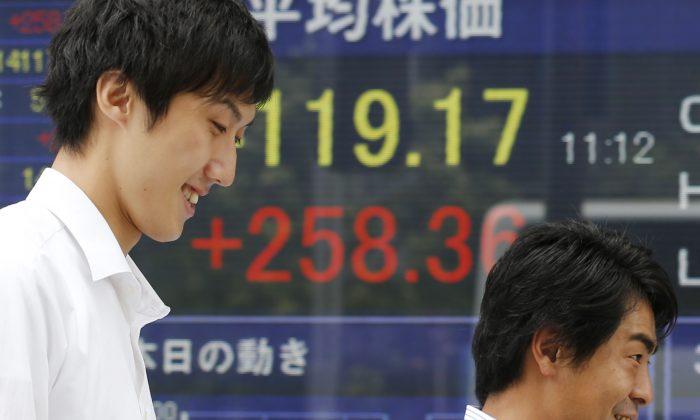Good news just keeps on coming for Japan. After the 2020 Summer Olympics went to Tokyo on Sunday, GDP figures for the second quarter were revised sharply upward to 3.8 percent growth during the second quarter.
Data from the Cabinet office first showed an annualized expansion of 2.6 percent, which was subsequently revised upward, on the back of higher capital expenditures on machinery and production equipment. The performance puts Japan ahead of the other three big developed markets, the United States and European Union.
“Obviously the Olympics won’t come around for another seven years, but preparation begins straight away so the impact on the economy between now and then, for example in the construction sector, will be very welcome,” said Craig Erlam, market analyst at Alpari. “This could bring about additional support the economy, which is already in recovery mode.”
The benchmark Nikkei index went up 2.5 percent to close at 14,205.23, the highest since Aug. 6.
The performance vindicates Prime Minster Shinzo Abe’s loose monetary policy also known as “Abenomics.” Abenomics seeks to stimulate the economy by easy monetary policy to create artificial inflation, enabling people to spend their savings.
Abe lobbied for Haruhiko Kuroda to become Bank of Japan president in March. Kuroda is a former banker who stands for easy economic policy.
He quickly lived up to his reputation, pushing ahead with a large program of quantitative easing (QE) in April, which was initially scheduled for 2014. The program includes $70 billion of bond purchases each month, less than the Fed’s $85 billion, but for an economy that is a less than half the size of the United States.
The anticipation and implementation of this policy sent the Nikkei index on a tear since October 2012, when it became clear Abe would win the election. The index had rallied 73 percent by May 2013.
The problem with aggressive monetary policy is increased price volatility, which became evident in May, when the Nikkei collapsed 7 percent in a single day on talks of a reduction in bond purchases.
Richard Howard of Hayman Capital, a Dallas-based hedge fund, which predicted the Japanese QE move in March, said the country’s high debt load poses risks.
“The problem with trying to create inflation is that debt is going to be harder to service,” he said in an interview with the Epoch Times. “The hope is that the inflation creates enough nominal growth to enable the higher debt service costs. That makes sense for a portion of the economy that is not highly levered and can afford to service their debts.”
Japan has a debt-to-GDP ratio of 240 percent, according to 2012 projections by the International Monetary Fund (IMF), worse than the United States, which has a 107 percent debt load.
The Associated Press contributed to this report.
Japanese Economy Hits Overdrive
GDP grows 3.8 percent in Q2, faster than any other developed country
Good news just keeps on coming for Japan. After the 2020 Summer Olympics went to Tokyo on Sunday, GDP figures for the second quarter were revised sharply upward to 3.8 percent growth during the second quarter.


9/9/2013
Updated: 9/9/2013




Friends Read Free